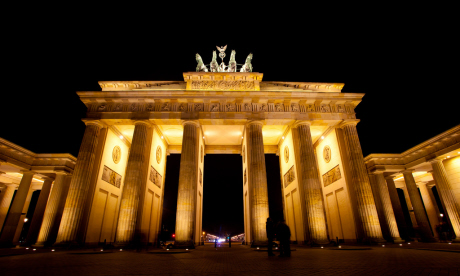
Situated in the heart of Europe, Germany has plenty of fantastic tourist attractions and unique sights to offer – we've picked out the country's top 10. Do you agree?
A treasure trove of human history
A UNESCO World Heritage site in the heart of the city, Berlin's Museum Island is a hugely popular attraction both with locals and international visitors. One of the world's most important museum complexes, it is home to priceless cultural treasures. Collections at
the Museum of the Ancient World, New Museum, Old National Gallery, Bode Museum and Pergamon Museum take visitors on a fascinating journey through art and culture from the cradle of civilisation in Mesopotamia through Egypt, Classical Greece and Rome, Byzantium, the Islamic World and the Middle Ages right up to the modern age and 19th century Romanticism.
A Versailles in miniature in the Palatinate
Among the treasures of Schwetzingen Palace are a mosque with Moorish-style domes, a picturesque mock ruin, a bath house in marble and a splendid Apollo temple.
Sanssouci Palace – the Prussian arcadia:an outstanding example of architectural and landscape design.
Celebrated in song and shrouded in legend – the Loreley rock is a 194-metre-high slate cliff towering above the narrowest point of the Rhine near St. Goarshausen. It became famous for the tale of Loreley, a beautiful but melancholy siren who would sit on the rock and sing as she combed her golden hair. Her beauty and beguiling song distracted
passing sailors from the strong currents and their ships smashed to pieces against the rocks.Today, the Loreley is a magnet for tourists from all over the world. In the Loreley visitor centre, an interactive exhibition tells you everything you need to know about the
region. The Upper Middle Rhine Valley became a UNESCO World Heritage site in 2002.
Hamburg docks are the most important in Germany by some distance and form one of the world's busiest transshipment ports. They are the gateway to the markets in northern, central and eastern Europe, the bridge between continental Europe and the rest of the world, and a major overseas container port. The fish market, a Hamburg institution, is held right on the docks.
Every Sunday morning since 1703, people have come here to buy fish, seafood and almost anything else you could imagine. The market is open from 5am to 9.30am (and from 7am in winter) and offers something for everyone, from early birds to people rolling home from the Reeperbahn.
The Church of Our Lady
Dresden's restored Church of Our Lady represents the pinnacle of Protestant ecclesiastic architecture and is a prime example of the European baroque style. For over 250 years, this masterpiece created by the city's master carpenter and architect George Bähr has reflected the prosperity and faith of Dresden's citizens. Built between 1726 and 1743, the badly damaged church became a war memorial after 1945 and is now a
symbol of reconciliation. Its re-consecration was broadcast live to the world in 2005 and a series of prestigious concerts, church services and free sightseeing visits are currently giving visitors the chance to marvel at its glory.
A passageway to history
No other monument in Berlin is as famous around the world as Brandenburg Gate, built between 1789 and 1791 to plans by C. G. Langhans on Pariser Platz in the heart of the city. After the Berlin Wall was built in 1961, Brandenburg Gate became impassable for 28 years.
As a signature attraction and symbol of German reunification, it now represents the past and present of the German capital in exemplary fashion. The gate is supported by six Doric columns, forming five passageways with pedestrian-only access. The famous quadriga depicting the goddess of victory, Victoria, riding a four-horse chariot was added in 1794.
Building first began in 1248 on what eventually became one of the finest ecclesiastical edifices in the world and the epitome of high-Gothic cathedral architecture in its purest possible form.
Germany's fairytale castle
Neuschwanstein is known all over the world as a symbol of idealised romantic architecture and for the tragic story of its owner. After losing sovereignty in his own kingdom, Ludwig II withdrew into his own world of myths, legend and fairytales.
The epitome of German Romanticism
One of Europe's most famous landmarks, the romantic ruins of Heidelberg Castle have been attracting visitors since the 19th century.